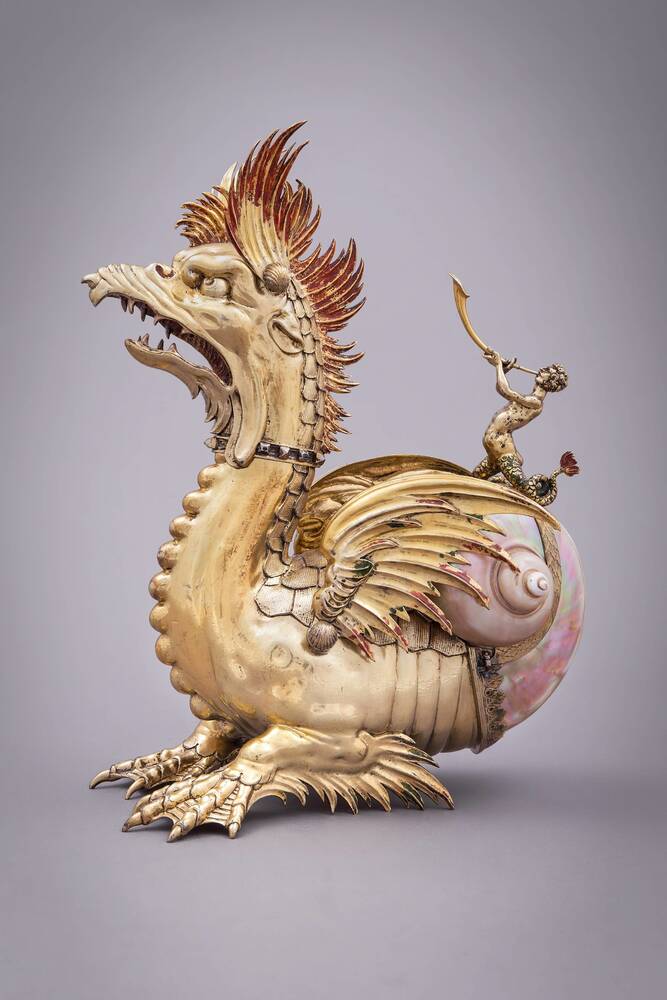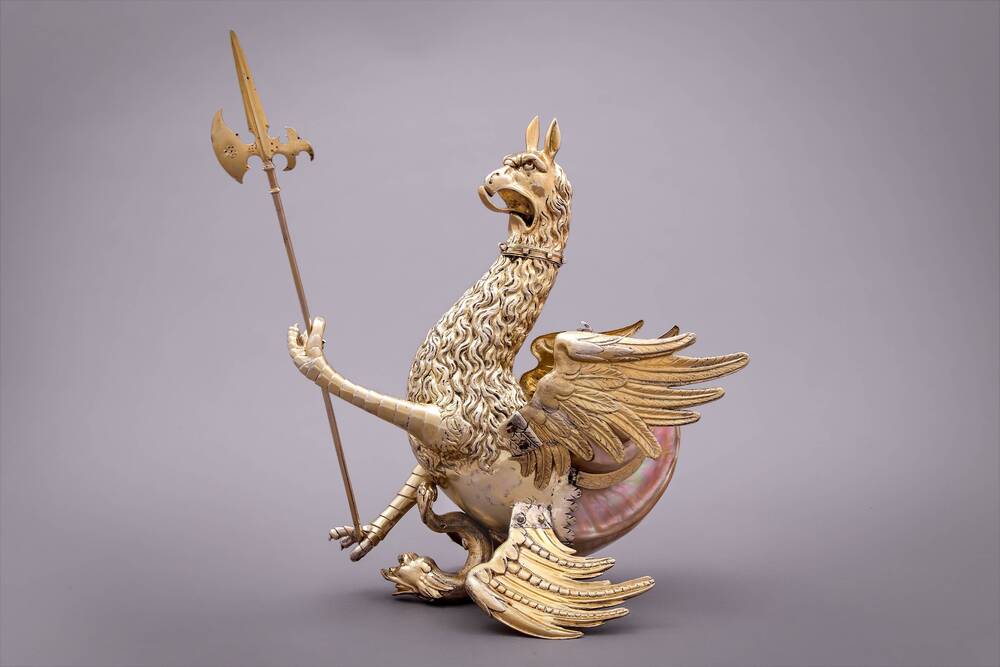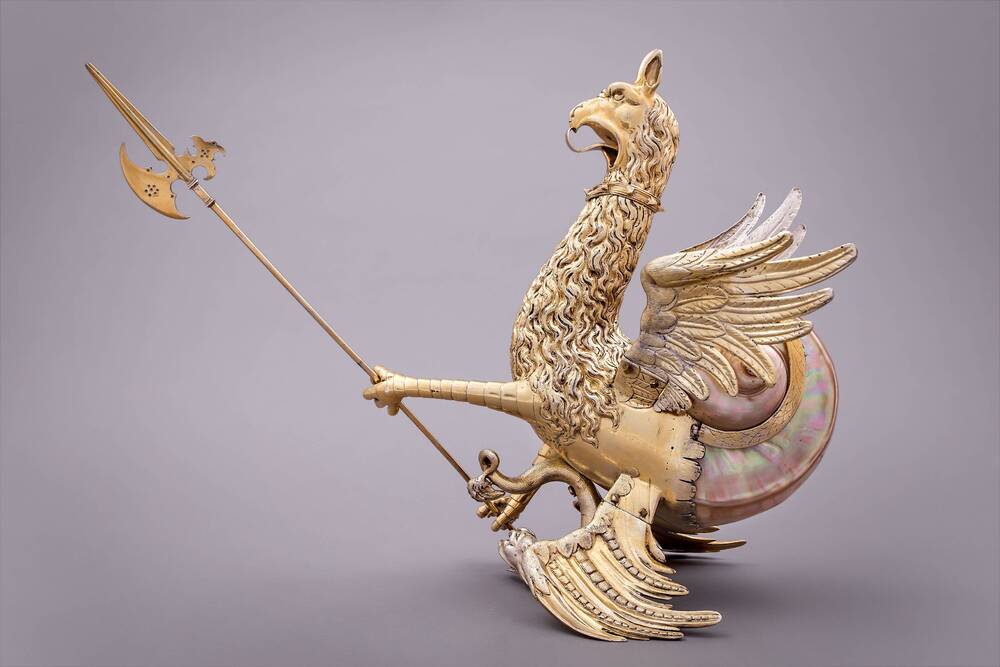A basilisk – the mythical “king of the serpents” – has opened his beak-like mouth threateningly. The comb on his head is erect, signalling his aggressivity. The ancient Greeks and Romans believed the basilisk could kill people merely by looking at them. But this little monster is hardly intimidating; his form is much too ludicrous. He has short, awkward legs ending in webbed claws. His worm-like body is made up of plump rings, which dissolve into a snail’s shell. Two pathetic-looking wings are screwed onto his shoulders, and he’s carrying a turtle’s shell on his back. A double-tailed Triton is standing on this shell and blowing into a long, curved pipe.
This strange mythical creature had a prosaic function. The angry head could be removed and the hollow body filled with wine. In practice, however, it was almost certainly never used as a drinking vessel. The representational value was always greater than the practical. It was made by Elias Geyer, a talented goldsmith, who flourished in Leipzig at the beginning of the seventeenth century. His playful drinking vessels are every bit as good as the masterpieces of the goldsmith centres of Augsburg and Nuremberg. Geyer liked to give his sculptures the form of grotesque mythical creatures. Exotic natural materials, like the basilisk’s gleaming mother-of-pearl shell, often formed the starting-point of his work. A number of these imaginative objects found their way into the Electors’ kunstkammer, and are now on display in the Green Vault.


